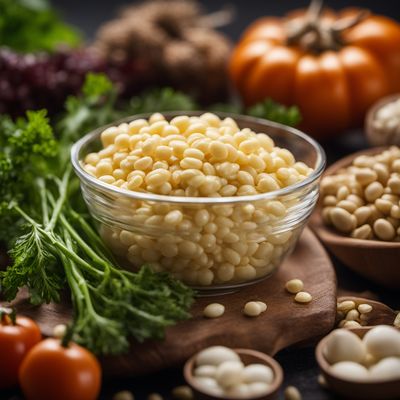
Ingredient
Hydrolysed animal proteins
Protein Powerhouse
Hydrolysed animal proteins are obtained by breaking down animal proteins into smaller components, such as peptides and amino acids. This process enhances their flavor and nutritional properties, making them valuable ingredients in the food industry. They are commonly used to add savory taste to various dishes, including soups, sauces, snacks, and processed meats. Hydrolysed animal proteins are available in different forms, such as powders or liquid concentrates, and they can be derived from various animal sources like beef, pork, or poultry.
Origins and history
The use of hydrolysed animal proteins in food can be traced back to ancient civilizations, where methods like fermentation and enzymatic hydrolysis were employed to extract flavors and nutrients from animal sources. Over time, these techniques evolved, and hydrolysed animal proteins became widely used in the food industry. Today, they are utilized in a range of products to enhance taste, improve texture, and boost nutritional content. Their versatility and ability to enhance umami flavors have made them popular among chefs and food manufacturers worldwide.
Nutritional information
Hydrolysed animal proteins are a concentrated source of protein and essential amino acids. They can provide a significant amount of protein per serving, making them beneficial for individuals looking to increase their protein intake. However, it is important to note that they may also contain varying amounts of sodium, depending on the specific product. As with any ingredient, moderation is key to maintaining a balanced diet.
Allergens
Hydrolysed animal proteins may contain allergens such as beef, pork, or poultry. Individuals with specific allergies or dietary restrictions should carefully read the ingredient labels or consult with the manufacturer to ensure the product is suitable for their needs.
How to select
When selecting hydrolysed animal proteins, look for reputable brands that prioritize quality and safety. Check the ingredient list to ensure it aligns with your dietary preferences and restrictions. Additionally, consider the specific application or recipe you intend to use the product for, as different forms and concentrations of hydrolysed animal proteins may be more suitable for certain dishes or purposes.
Storage recommendations
To maintain the freshness and quality of hydrolysed animal proteins, store them in a cool, dry place away from direct sunlight. Follow the storage instructions provided by the manufacturer, as different products may have specific requirements. It is also important to reseal the packaging tightly after each use to prevent moisture or contaminants from affecting the product.
How to produce
Producing hydrolysed animal proteins at home is a complex process that requires specialized equipment and knowledge. It is typically done on an industrial scale by food manufacturers. However, if you are interested in experimenting with homemade hydrolysed animal proteins, it is recommended to consult professional resources or experts in the field for guidance.
Preparation tips
Hydrolysed animal proteins are primarily used as flavor enhancers in various dishes. They can be added to soups, sauces, marinades, dressings, and snacks to intensify the savory taste and improve overall flavor balance. They are also commonly used in processed meats, such as sausages or deli meats, to enhance their taste and texture. Additionally, hydrolysed animal proteins can be incorporated into nutritional supplements or protein powders to boost their protein content.
Culinary uses
Hydrolysed animal proteins are widely available in the food industry and can be found in processed foods, snacks, and condiments. They are commonly used in both commercial and homemade preparations to enhance flavor and nutritional value. They are particularly popular in Asian cuisines, where umami flavors are highly valued.
Availability
Global

